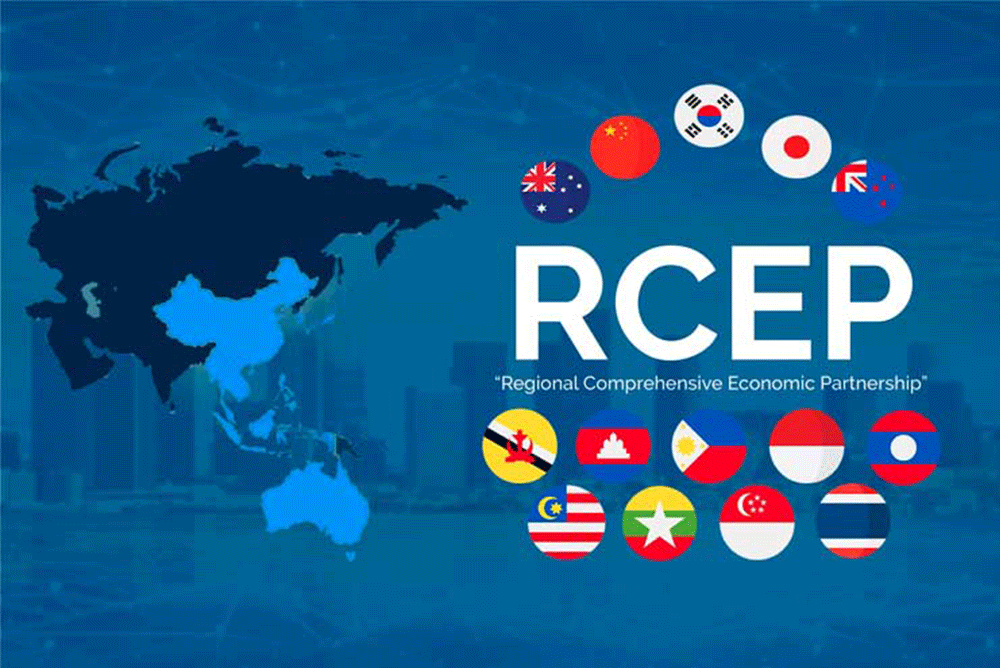
The Regional Comprehensive Economic Partnership (RCEP), since its inception and especially since becoming fully effective in June across its 15 signatory nations, has been a cornerstone in shaping the economic trajectory of the participating countries, including China. Not merely a channel for invigorating goods trade and investment cooperation between China and its RCEP partners, the agreement plays a pivotal role in stabilizing foreign capital and trade, as well as fortifying supply chains amidst a complex international situation.
I. RCEP: A Catalyst for Trade Growth
(1) Driving External Trade
In 2022, China’s trade growth contribution from RCEP partners reached 28.8%, with exports to RCEP partners contributing 50.8% to the annual export growth. Additionally, the central region’s goods trade with RCEP partners demonstrated stronger growth vitality than the eastern region, reflecting RCEP’s vital role in promoting coordinated regional economic development.
(2) Regional Economic Impact
RCEP has emerged as a significant force propelling China’s foreign trade growth, particularly evident in the robust trading relationship and economic synchronization seen between China and its regional partners.
(3) Addressing Regional Disparities
Central and western regions of China have exhibited heightened growth vitality, indicating RCEP’s pivotal role in enhancing China’s regional economic coordinated development.
II. Investment Cooperation and Foreign Capital Stabilization through RCEP
(1) Boosting Foreign Investment
China utilized RCEP partner foreign capital amounting to USD 235.3 billion in 2022, a YoY increase of 24.8%, significantly surpassing the 9% growth in global investment in China.
(2) Investment Hotspot
RCEP regions have also become hotspots for investments by Chinese enterprises, demonstrating a growing symbiotic economic relationship between the member countries.
(3) RCEP’s Contribution to Investment Growth
RCEP regions contributed to a 29.9% increase in China’s actual utilization of foreign capital, marking a 17.7 percentage point increase from 2021.
III. Ensuring Stability and Strengthening of Supply Chains via RCEP
(1) Enhancing Trade and Investment Interaction
Cooperation in numerous fields such as electronic products, new energy products, automobiles, and textiles has been fostered among members like Vietnam, Malaysia, Japan, and South Korea, establishing a positive interaction in trade and investment.
(2) Stabilizing Industrial and Supply Chains
In 2022, China’s intermediate goods trade with the RCEP region reached USD 1.3 trillion, accounting for 64.9% of trade within the RCEP region and 33.8% of global intermediate goods trade.
(3) Safeguarding Supply Chains
RCEP has played a proactive role in stabilizing and strengthening China’s industrial and supply chains, which is critical in a global context marked by disruptions and uncertainties.
IV. Digital Economy and Trade Facilitation under RCEP
The rules of RCEP concerning e-commerce and trade facilitation have provided a favorable development environment for China and its RCEP partners to expand digital economic cooperation. Cross-border e-commerce has become a significant new trade format and model between China and its RCEP partners, forming a new growth pole for regional trade and further increasing consumer welfare.
Conclusion
As per the “RCEP Regional Cooperation Results and Development Prospect Report 2023,” released during the 20th China-ASEAN Expo, the RCEP has demonstrated resilience in the cooperation relationships amongst its members, driving regional economic and trade cooperation and initial release of economic growth dividends. As global economic development faces considerable downward pressure and regional cooperation encounters substantial challenges due to heightened geopolitical risks and uncertainties in the periphery, the overall economy of the RCEP region maintains a relatively good growth posture, holding substantial future growth potential. It is imperative that all members collectively manage and utilize the RCEP as an open cooperation platform, fully releasing the open dividends of the RCEP, and making greater contributions to regional economic growth.


